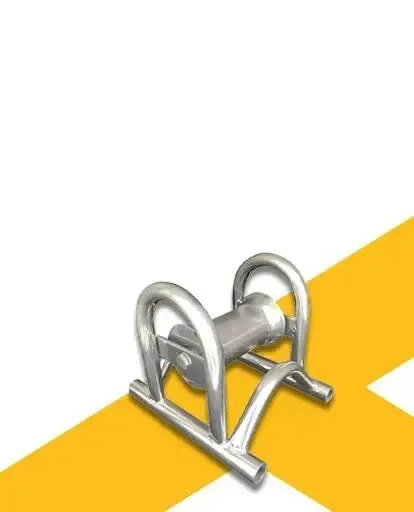
-
 Afrikaans
Afrikaans -
 Albanian
Albanian -
 Amharic
Amharic -
 Arabic
Arabic -
 Armenian
Armenian -
 Azerbaijani
Azerbaijani -
 Basque
Basque -
 Belarusian
Belarusian -
 Bengali
Bengali -
 Bosnian
Bosnian -
 Bulgarian
Bulgarian -
 Catalan
Catalan -
 Cebuano
Cebuano -
 Corsican
Corsican -
 Croatian
Croatian -
 Czech
Czech -
 Danish
Danish -
 Dutch
Dutch -
 English
English -
 Esperanto
Esperanto -
 Estonian
Estonian -
 Finnish
Finnish -
 French
French -
 Frisian
Frisian -
 Galician
Galician -
 Georgian
Georgian -
 German
German -
 Greek
Greek -
 Gujarati
Gujarati -
 Haitian Creole
Haitian Creole -
 hausa
hausa -
 hawaiian
hawaiian -
 Hebrew
Hebrew -
 Hindi
Hindi -
 Miao
Miao -
 Hungarian
Hungarian -
 Icelandic
Icelandic -
 igbo
igbo -
 Indonesian
Indonesian -
 irish
irish -
 Italian
Italian -
 Japanese
Japanese -
 Javanese
Javanese -
 Kannada
Kannada -
 kazakh
kazakh -
 Khmer
Khmer -
 Rwandese
Rwandese -
 Korean
Korean -
 Kurdish
Kurdish -
 Kyrgyz
Kyrgyz -
 Lao
Lao -
 Latin
Latin -
 Latvian
Latvian -
 Lithuanian
Lithuanian -
 Luxembourgish
Luxembourgish -
 Macedonian
Macedonian -
 Malgashi
Malgashi -
 Malay
Malay -
 Malayalam
Malayalam -
 Maltese
Maltese -
 Maori
Maori -
 Marathi
Marathi -
 Mongolian
Mongolian -
 Myanmar
Myanmar -
 Nepali
Nepali -
 Norwegian
Norwegian -
 Norwegian
Norwegian -
 Occitan
Occitan -
 Pashto
Pashto -
 Persian
Persian -
 Polish
Polish -
 Portuguese
Portuguese -
 Punjabi
Punjabi -
 Romanian
Romanian -
 Russian
Russian -
 Samoan
Samoan -
 Scottish Gaelic
Scottish Gaelic -
 Serbian
Serbian -
 Sesotho
Sesotho -
 Shona
Shona -
 Sindhi
Sindhi -
 Sinhala
Sinhala -
 Slovak
Slovak -
 Slovenian
Slovenian -
 Somali
Somali -
 Spanish
Spanish -
 Sundanese
Sundanese -
 Swahili
Swahili -
 Swedish
Swedish -
 Tagalog
Tagalog -
 Tajik
Tajik -
 Tamil
Tamil -
 Tatar
Tatar -
 Telugu
Telugu -
 Thai
Thai -
 Turkish
Turkish -
 Turkmen
Turkmen -
 Ukrainian
Ukrainian -
 Urdu
Urdu -
 Uighur
Uighur -
 Uzbek
Uzbek -
 Vietnamese
Vietnamese -
 Welsh
Welsh -
 Bantu
Bantu -
 Yiddish
Yiddish -
 Yoruba
Yoruba -
 Zulu
Zulu


Oct . 02, 2024 23:25 Back to list
Durable Stainless Steel Wire Ties for Versatile Applications and Secure Binding Solutions
The Versatility of Stainless Steel Wire Ties
Stainless steel wire ties are an invaluable tool in a variety of industries and applications, thanks to their robust properties and versatile functionality. Unlike traditional wire ties made from other materials, stainless steel offers superior strength, corrosion resistance, and longevity, making it an ideal choice for both indoor and outdoor use.
The Versatility of Stainless Steel Wire Ties
In the realm of construction and engineering, stainless steel wire ties are essential for bundling and securing various materials. They provide reliable fastening solutions for cables, pipes, and other structural elements. Their high tensile strength ensures that they can withstand significant tension and pressure without snapping, making them a preferred choice for heavy-duty applications.
stainless wire ties

Moreover, stainless steel wire ties are easy to manipulate. They can be bent, twisted, and shaped to accommodate numerous applications. This flexibility allows users to create custom solutions for their specific needs, whether it’s securing equipment on a job site or bundling electrical wires in an industrial setting. Various gauges and configurations are available, allowing users to select the appropriate type of wire tie based on the particular requirements of their project.
In addition to their practical benefits, stainless steel wire ties can also contribute to sustainability efforts. By choosing durable materials that last longer and require less frequent replacement, businesses can reduce waste in their operations. Furthermore, stainless steel is 100% recyclable, making it an environmentally friendly option for various applications.
In conclusion, stainless steel wire ties are an essential tool that combines strength, longevity, and versatility. Their ability to perform in challenging environments and their ease of use make them a go-to choice across multiple sectors. As industries continue to seek reliable and durable solutions, the demand for stainless steel wire ties is likely to increase, solidifying their place as a key component in modern manufacturing and engineering practices.
Latest news
Upgrade Your Cable Installation with the Right Rodder Tools
NewsMay.28,2025
Maximize Efficiency with the Right Cable Laying Tools
NewsMay.28,2025
Mastering Cable Installation: Tools That Make the Difference
NewsMay.28,2025
Solutions for Heavy-Duty Cable Handling: Choosing the Right Cable Roller
NewsMay.28,2025
Efficient Cable Installation Starts with the Right Rodder Tools
NewsMay.28,2025
Choosing the Right Cable Pulling Tools for Your Project
NewsMay.28,2025











